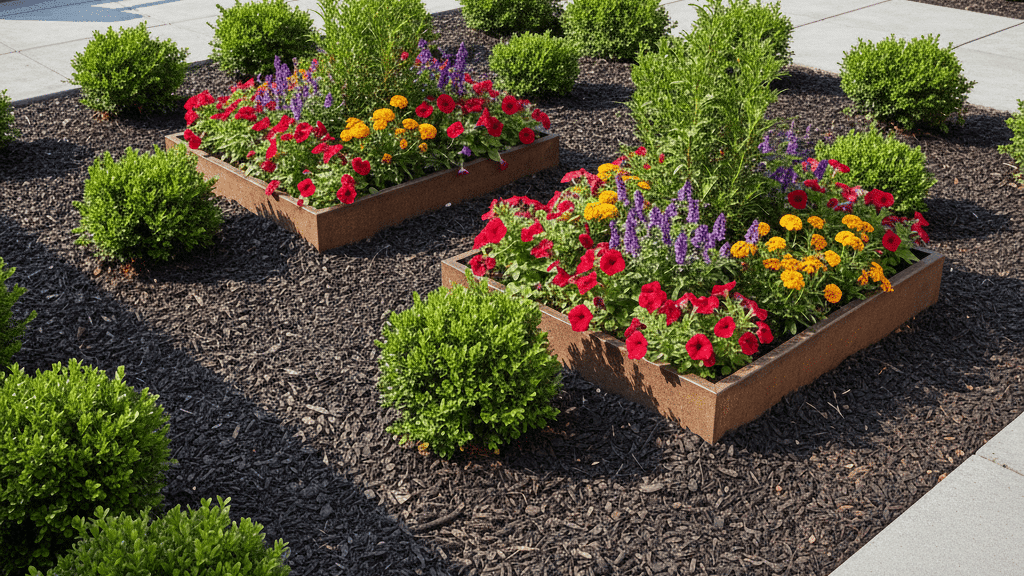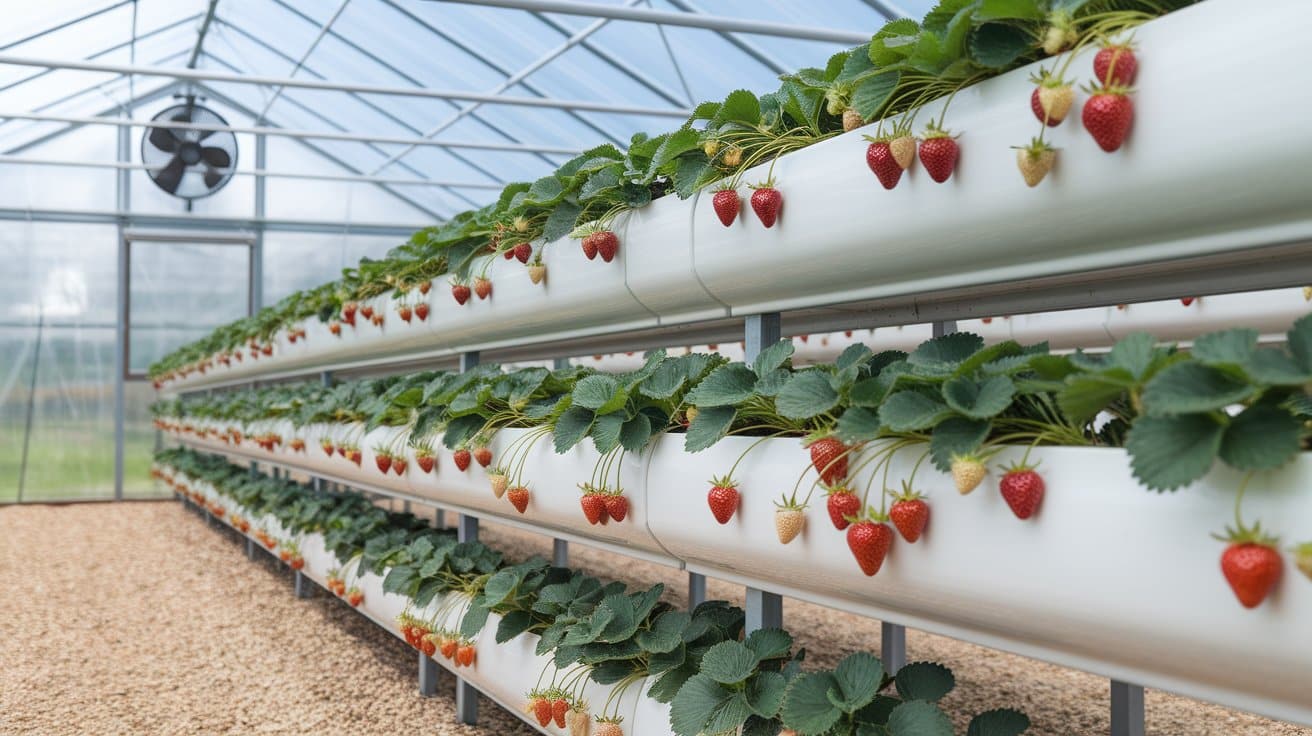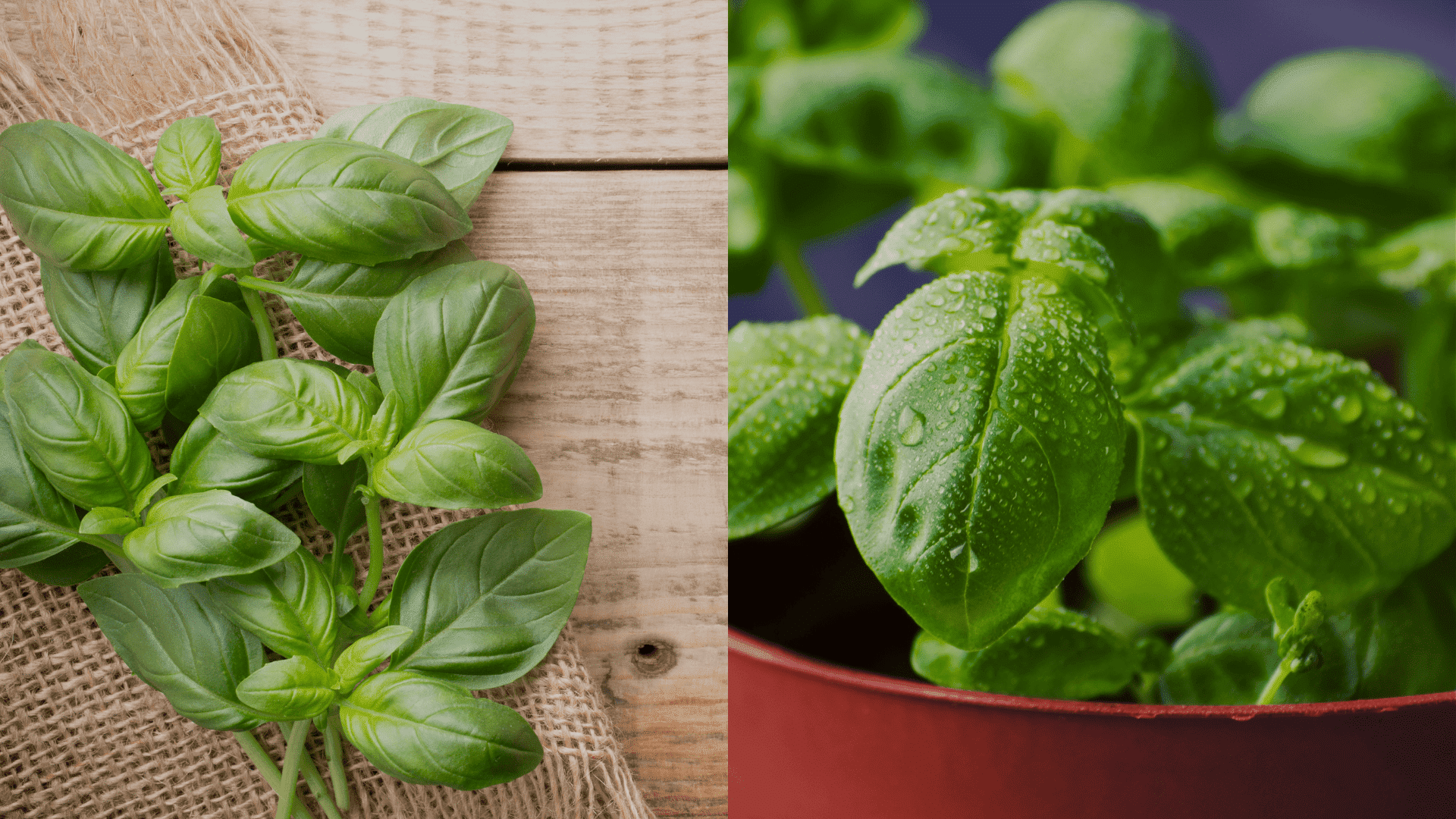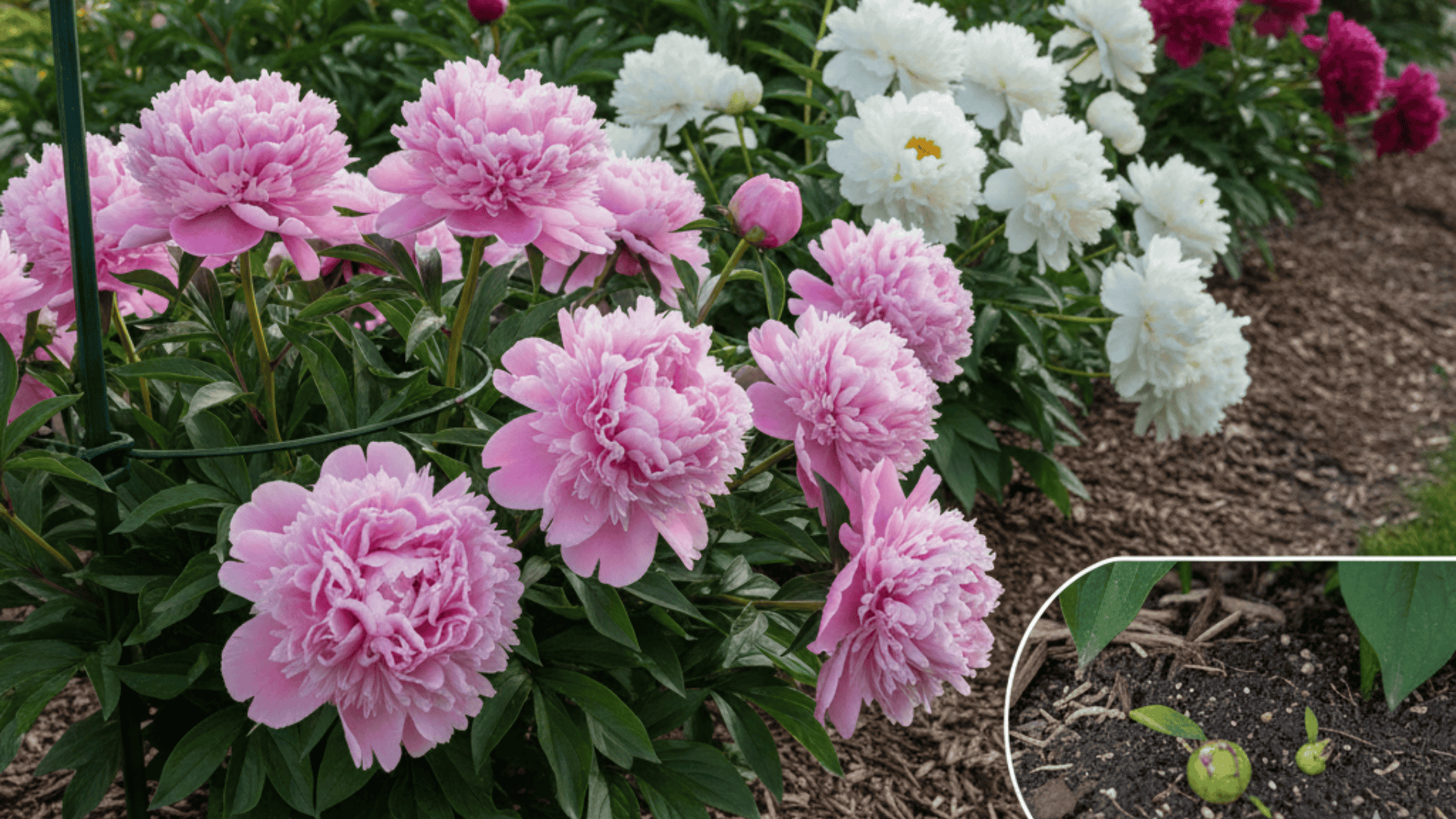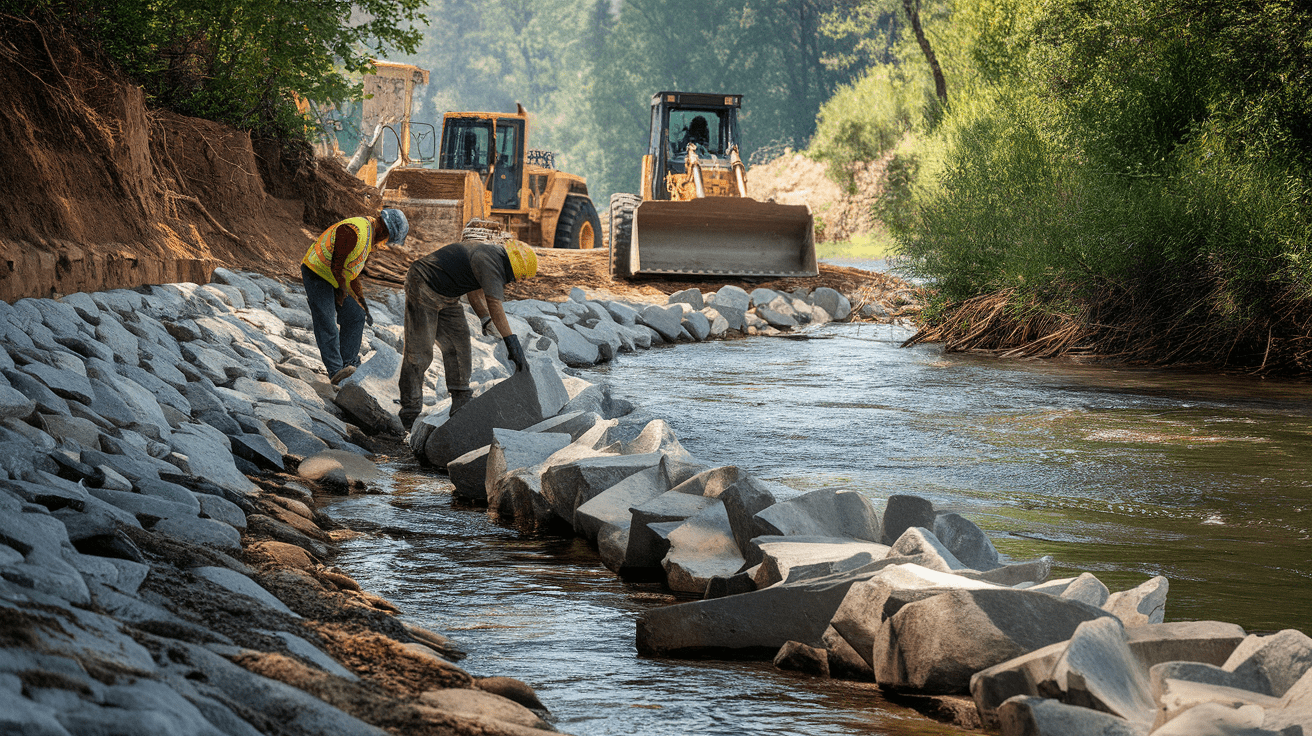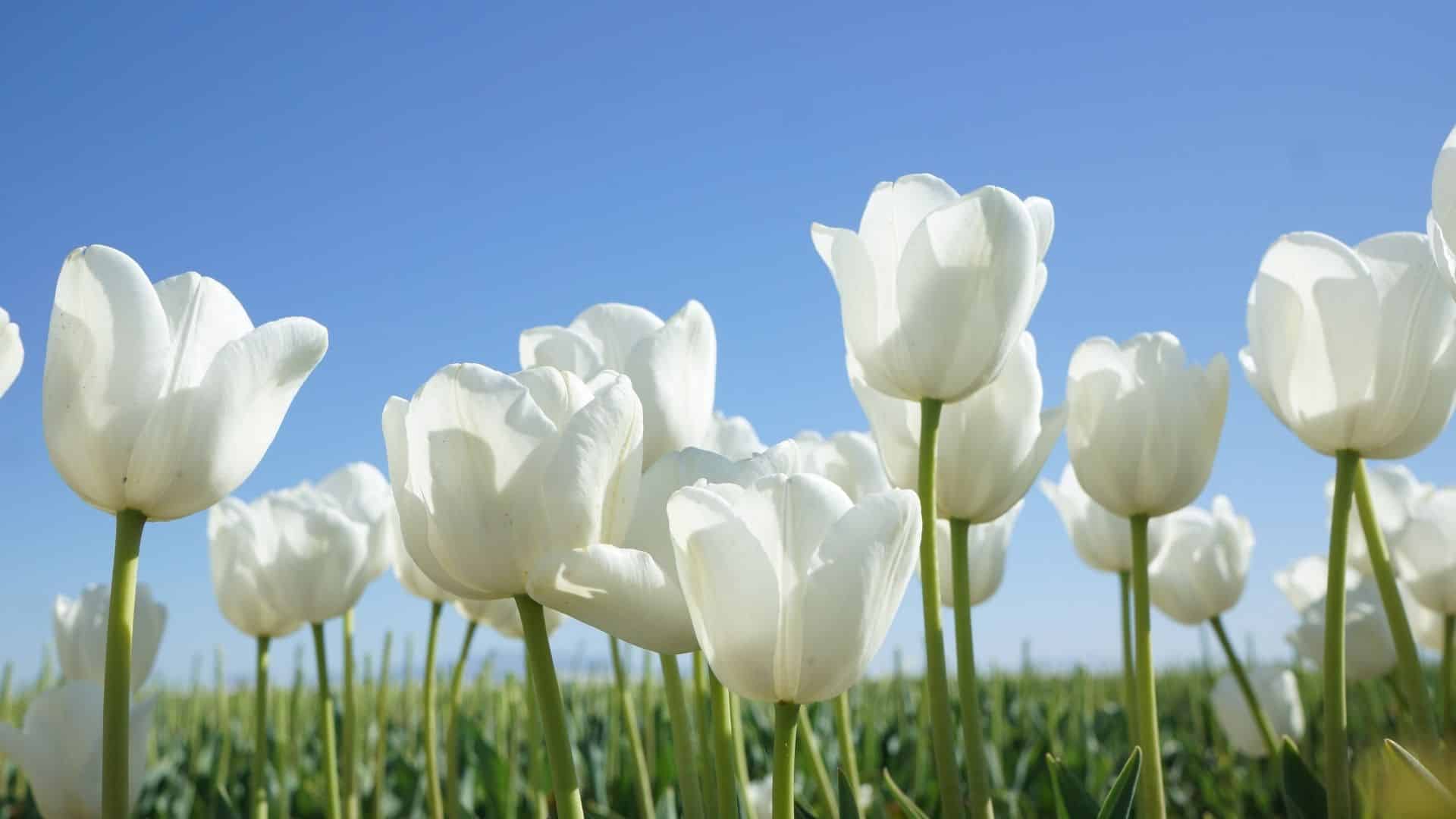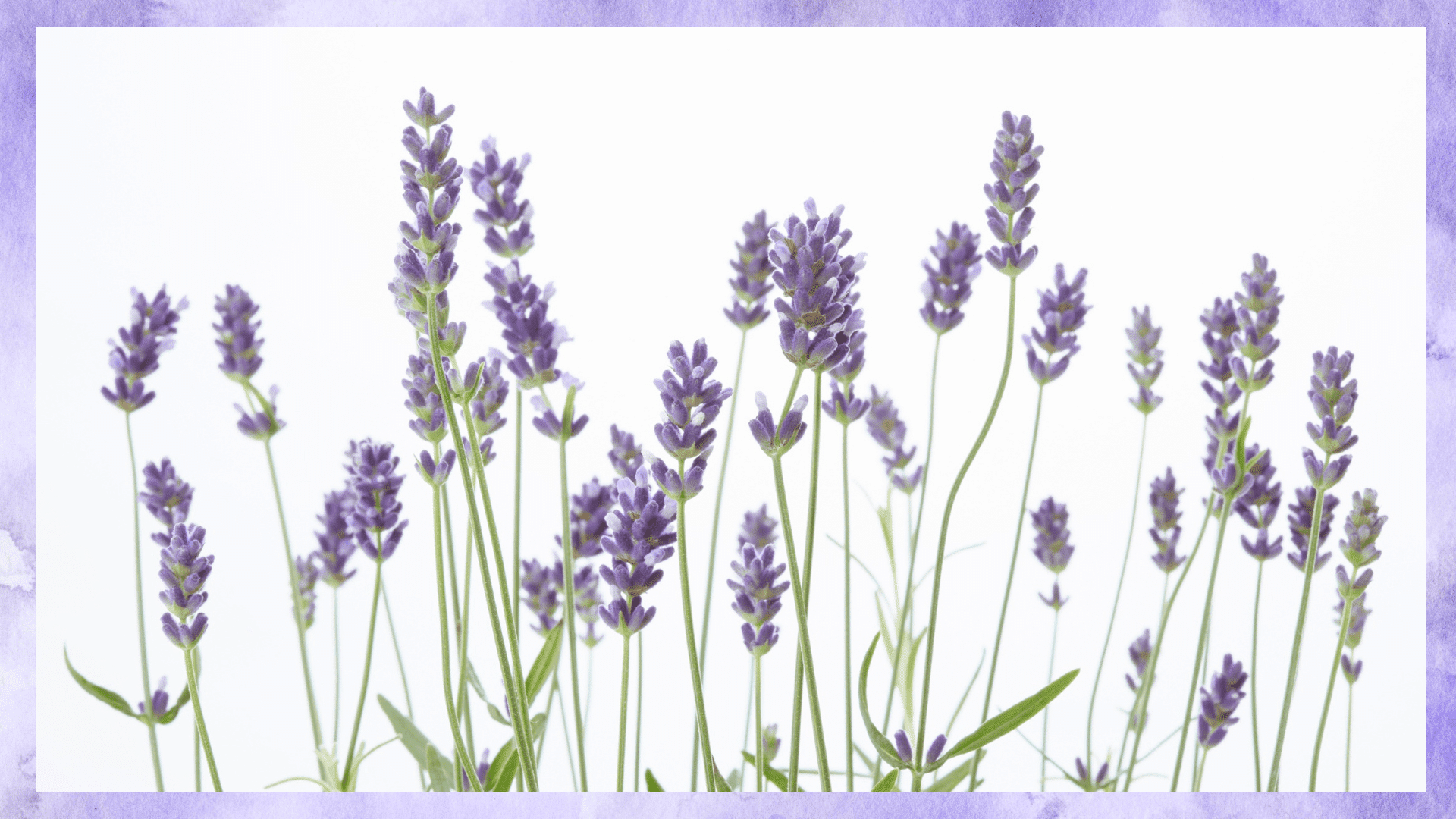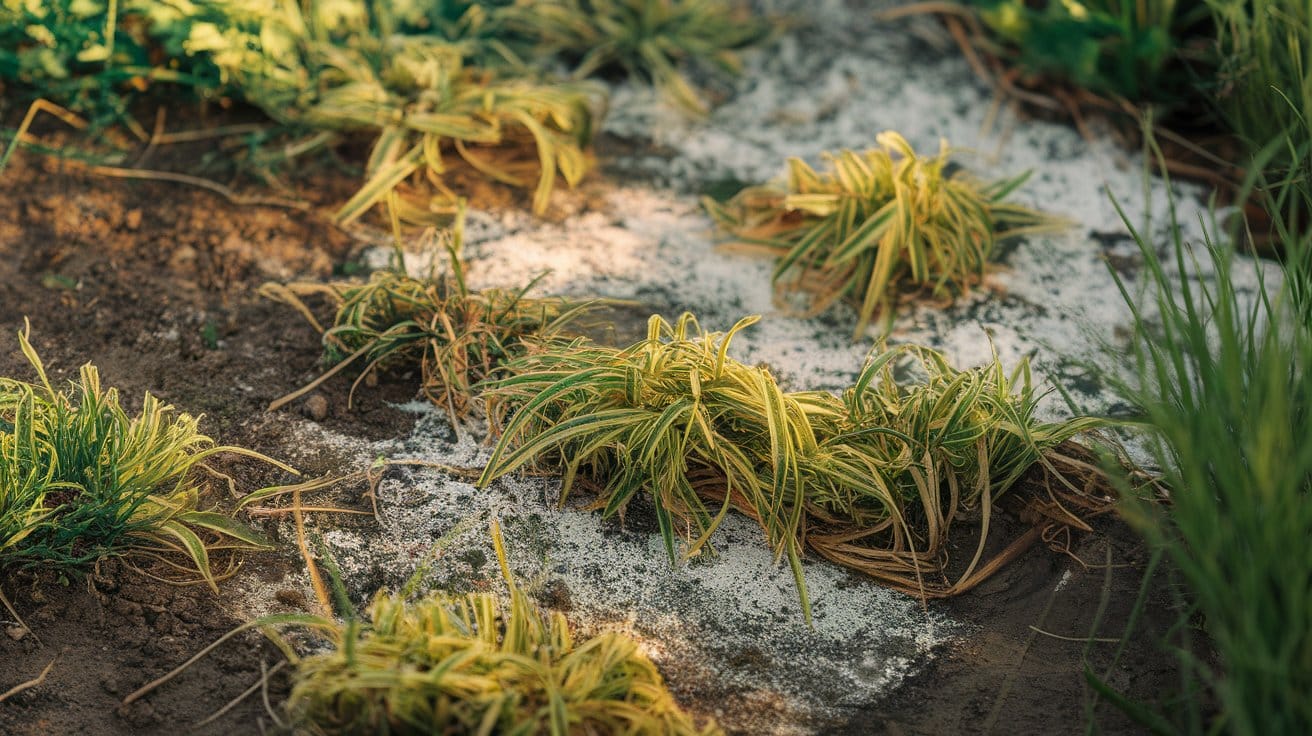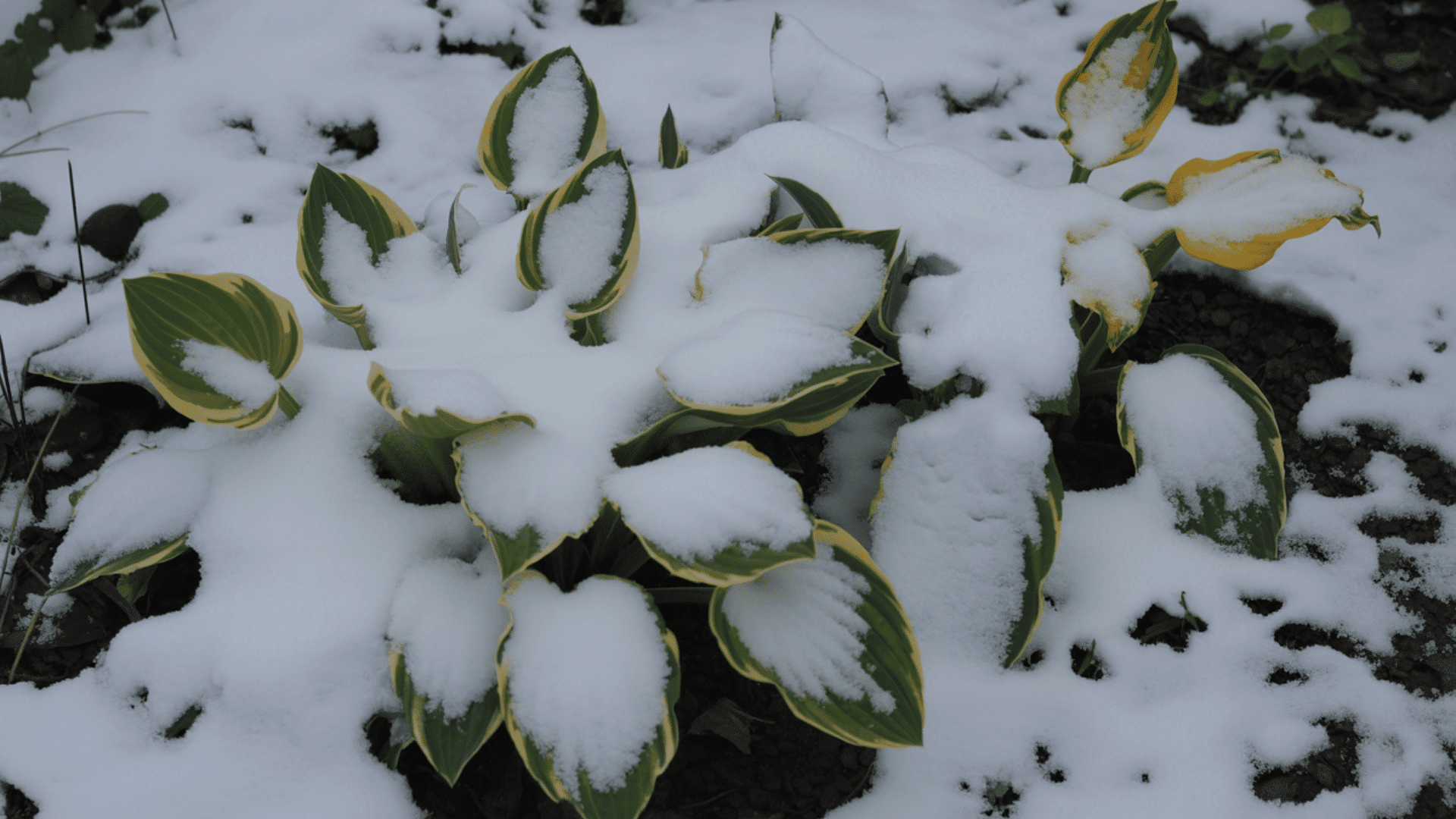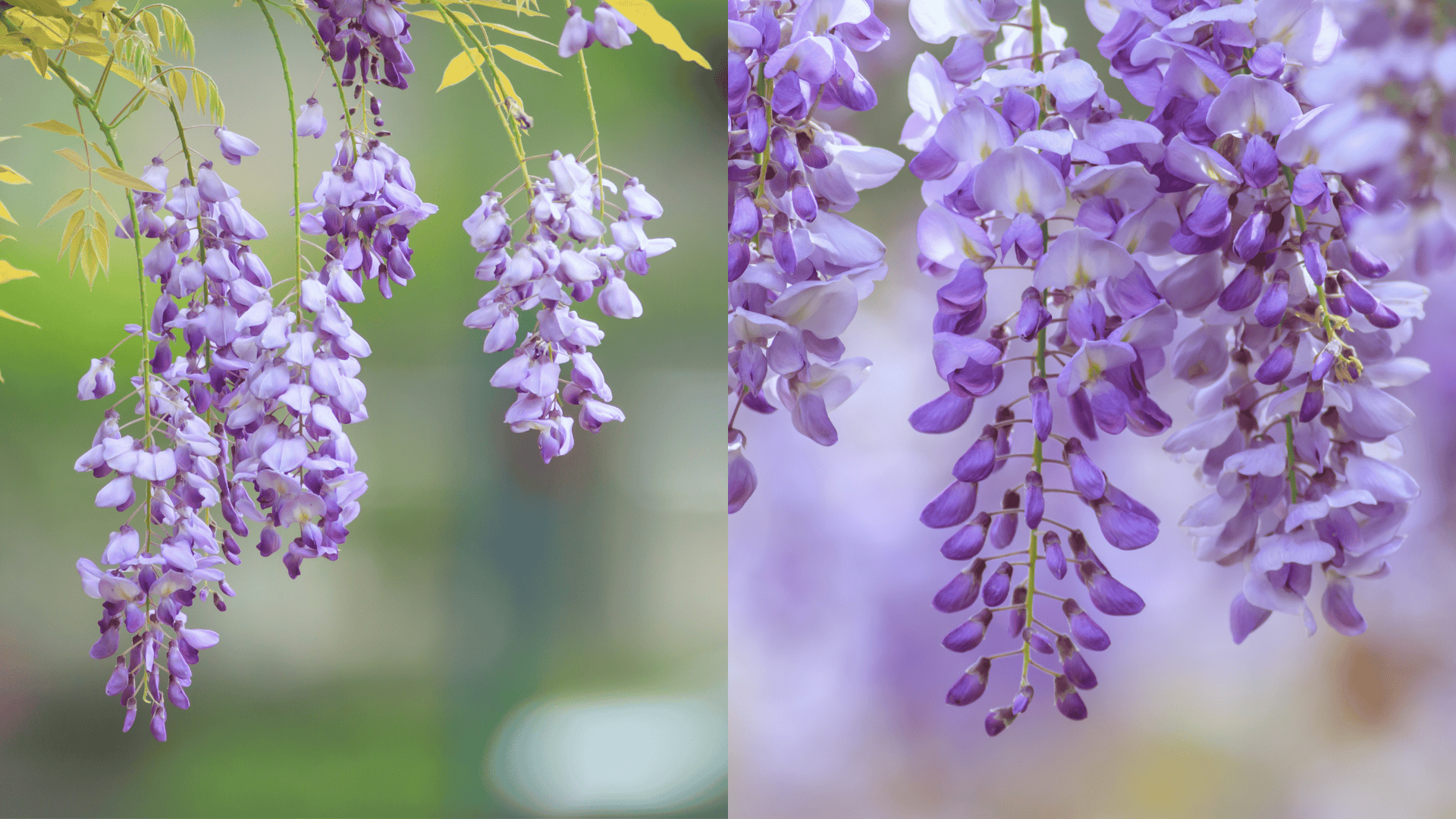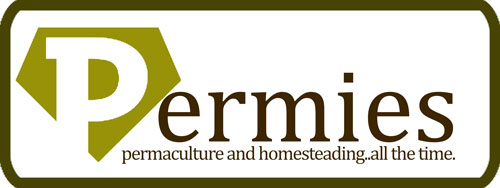Over the years, I have seen rubber mulch gain steady popularity among homeowners and landscapers looking for a modern, low-maintenance alternative to traditional mulch.
It holds color, resists pests, and stays in place through wind and rain.
Made from recycled tires, it provides a second purpose for materials that would otherwise end up in landfills.
Still, durability is only part of the picture.
Every outdoor surface has different needs, and rubber mulch is not right for all.
Knowing where rubber mulch is good and where it falls short helps decide if it belongs in your landscape.
What is Rubber Mulch?
Rubber mulch is made from recycled automobile tires that are stripped of metal and fabric before being shredded and coated for weather resistance.
The result is a clean, uniform material that withstands sunlight, moisture, and temperature changes.
Unlike organic mulch, it does not break down, which means it lasts for many years without needing replacement.
I have used both coarse and fine types, each serving a different purpose depending on design and use.
Its long lifespan and stable form make it a reliable option in areas that prioritize structure and visual appeal.
Is rubber mulch good for consistent results?
The answer depends on its use and environment.
Is Rubber Mulch Good for Landscaping and Gardening?
Landscaping and gardening have different goals, and rubber mulch performs differently in each.
Landscaping focuses on structure and appearance, while gardening depends on soil health and organic enrichment.
From experience, I can say whether rubber mulch is good for landscaping.
Absolutely. For gardening, only partly.
Rubber mulch works best in spaces that prioritize design and order, while organic mulch is better for nurturing soil-based growth.
For landscaping, is rubber mulch good?
Yes, because it keeps form, color, and structure intact through all seasons.
However, when it comes to flower beds, is rubber mulch good for use? It can be, especially where appearance and weed control take priority over soil enrichment.
If you’re thinking, “Is rubber mulch good for drainage?” it performs moderately well, unlike wood mulch, which helps with moisture balance as well.
Advantages of Rubber Mulch
Rubber mulch provides several lasting benefits that make it practical for many landscaping projects.
If you’re asking if rubber mulch is good for long-term performance, these points make the answer clear, as it performs well across various conditions.
1. Durability: Rubber mulch holds its shape, color, and structure through different seasons. It doesn’t decompose, making it a long-term option for stable, tidy surfaces.
2. Low Maintenance: Once applied, it stays in place and rarely needs replacement or reapplication, even after heavy rainfall or wind.
3. Weed Control: When used with a proper weed barrier, it effectively prevents unwanted weed growth, keeping landscaped areas organized.
4. Moisture Retention: It helps soil retain water by reducing evaporation, maintaining more consistent moisture levels below the surface.
5. Safety: The soft, cushioned texture reduces the risk of injuries, making it suitable for playgrounds, pathways, and pet areas.
6. Recycling Benefit: Since it’s made from repurposed tires, rubber mulch contributes to waste reduction and promotes material reuse.
Rubber mulch is good for flowers especially where appearance and weed control are key.
What are the Cons of Rubber Mulch?
Rubber mulch has some drawbacks that are worth considering before installation.
- Chemical Leaching: Small traces of metals such as zinc may leach into the soil, which could affect sensitive plants.
- Heat Retention: Rubber mulch absorbs heat during the day, which can increase soil temperature and stress plant roots.
- No Nutrient Value: Because it doesn’t decompose, it doesn’t add any organic matter or nutrients to the soil.
- Non-Biodegradable Nature: While it helps recycle waste, it’s not biodegradable and may leave behind fine residue or particles over time.
While it’s fine for decorative or low-maintenance landscapes, rubber mulch is not good for plants that need organic support.
Comparison of Rubber Mulch with Other Mulch Materials
| Feature | Rubber Mulch | Wood or Bark Mulch | Gravel or Stone Mulch |
|---|---|---|---|
| Durability | Long-lasting, doesn’t break down | Decomposes naturally over time | Permanent, doesn’t decompose |
| Maintenance | Minimal care required | Needs seasonal replacement | Very low maintenance |
| Soil Health | Adds no nutrients | Improves soil fertility | Neutral effect |
| Temperature Effect | Retains heat | Moderates temperature | Reflects heat |
| Eco Impact | Made from recycled materials, but non-biodegradable | Biodegradable and renewable | Non-renewable but long-lasting |
| Ideal Use | Playgrounds, decorative borders, pathways | Flower beds, vegetable gardens | Dry areas, rock gardens |
Rubber mulch excels where durability and appearance matter most.
Organic mulch remains the better choice for gardens that rely on active soil life, while gravel mulch suits permanent, dry landscapes requiring minimal upkeep.
How to Lay Rubber Mulch?
I have recently laid mulch in my garden, and this is the process to follow.
These steps also prevent issues like uneven layering or poor drainage while making maintenance easier later.
Step 1: Prepare and Clear the Ground
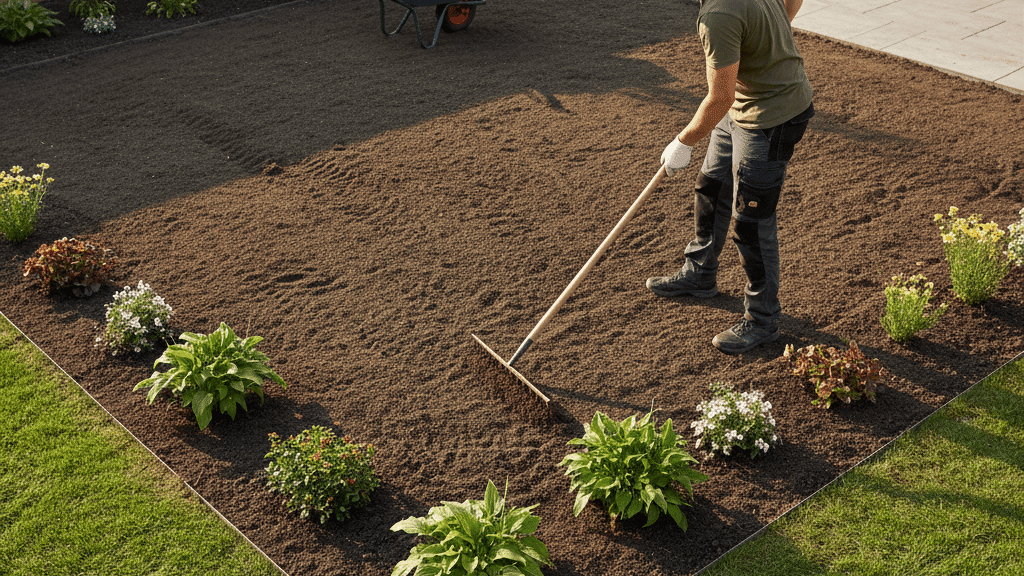
Start by removing old mulch, stones, or weeds to ensure the surface is level and clean.
Then, rake the soil flat, lightly compact it, and check for proper drainage.
If the area has uneven patches or soft spots, smooth them out before adding mulch.
For gardens, I take extra care not to disturb plant roots.
A firm, even foundation ensures long-lasting placement and a tidy look that withstands weather and foot traffic.
Step 2: Install a Weed Barrier
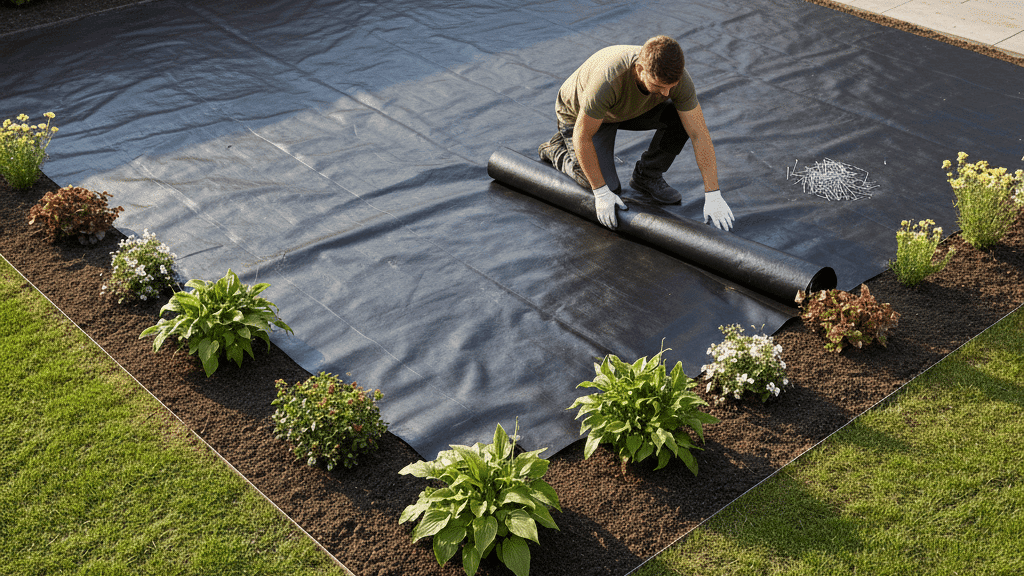
A strong weed barrier is essential for keeping the surface clean and low-maintenance.
Use professional-grade landscape fabric, overlapping edges by a few inches to prevent weeds from finding gaps.
Openings are made only for existing plants or fixtures.
This fabric also keeps soil from mixing with the mulch, helping the layer stay even.
In high-traffic spaces, securing it with landscape pins improves stability and reduces movement from weather or pressure.
Step 3: Spread and Level the Mulch
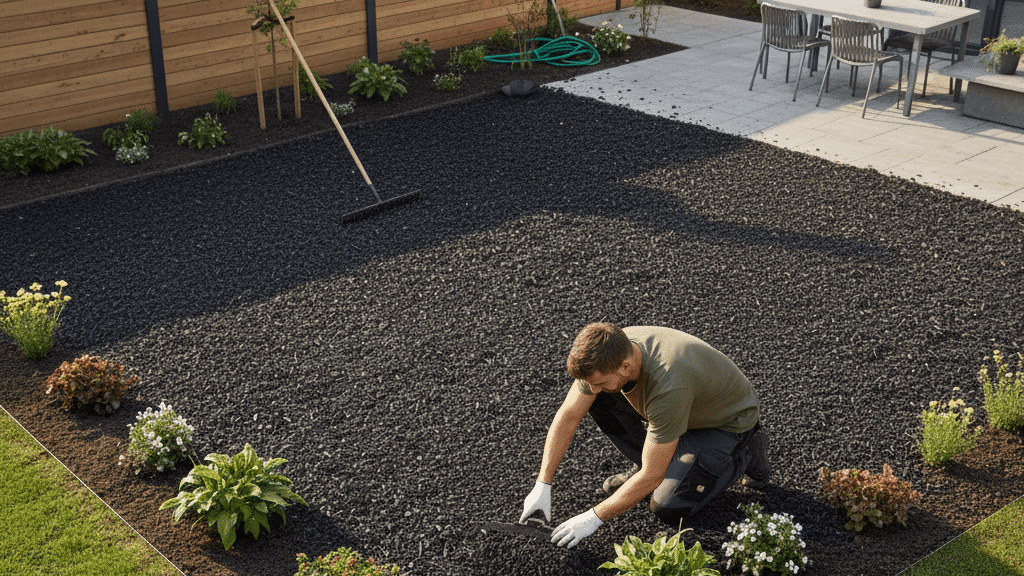
Once the ground is ready, spread the rubber mulch evenly across the surface with a rake.
For most spaces, about two inches of mulch provides full coverage and a balanced look.
After spreading, gently press the layer to help it stay firm.
This prevents movement from rain or wind.
For gardens, I prefer slightly less depth around stems to maintain airflow while still offering protection from heat and erosion.
Step 4: Edge and Contain the Area
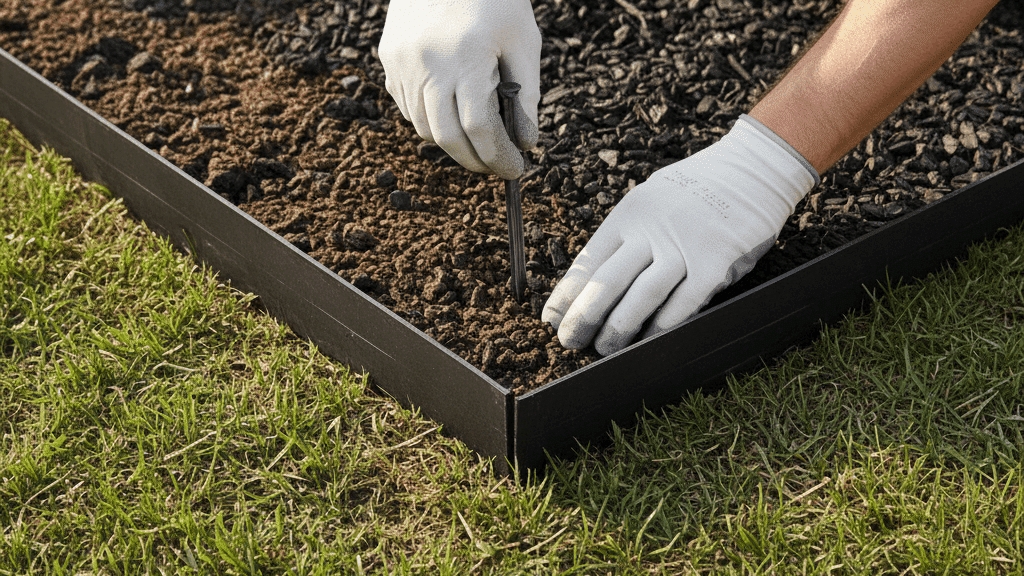
Proper edging keeps the mulch secure and prevents shifting over time.
Use rubber, metal, or stone borders, depending on the project’s design.
Each type adds both structure and a finished appearance to the layout.
In curved or irregular spaces, flexible edging works best to match contours.
For long, straight paths, solid edging ensures firm boundaries.
This simple but vital step reduces scattering, supports durability, and enhances the overall neatness of the installation.
Step 5: Maintain and Refresh Periodically
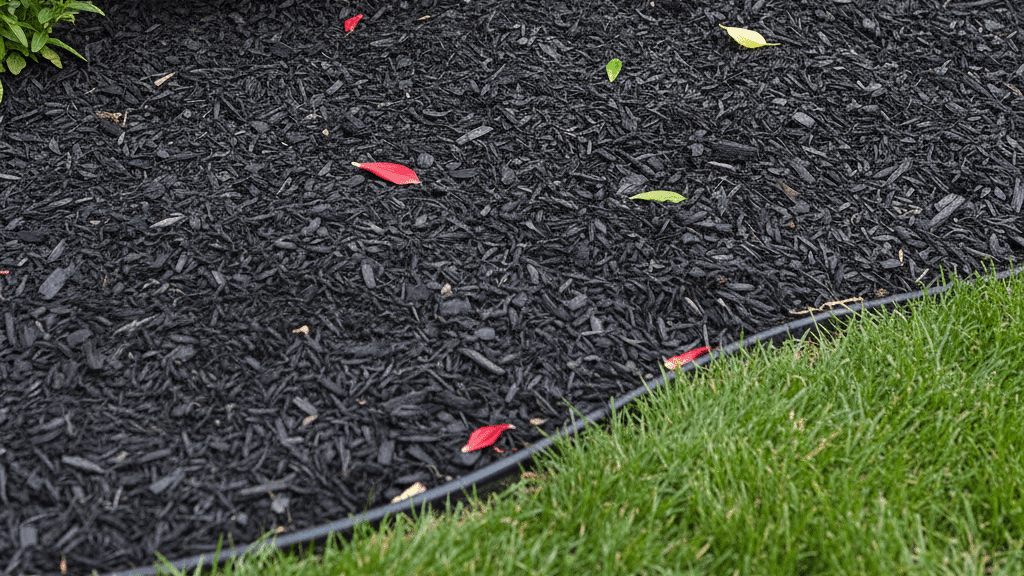
Rubber mulch requires little upkeep, but regular checks help preserve its appearance and function.
Inspect the area once or twice yearly, raking lightly to prevent compaction.
Removing debris keeps the surface looking fresh and clean.
If the color begins to fade, top it with a thin layer of new mulch.
Avoid piling too close to plant stems to prevent moisture buildup, ensuring long-term protection and consistent performance.
Is Rubber Mulch Good for the Environment?
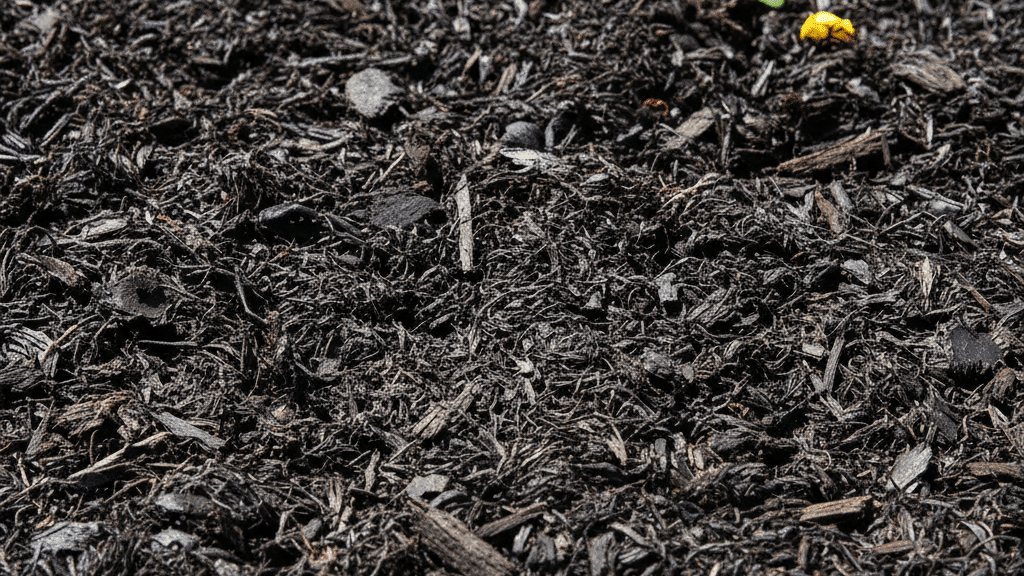
The environmental impact of rubber mulch sits at a midpoint between resource reuse and ecological responsibility.
It offers several sustainable advantages while raising valid concerns about its long-term effects.
Assessing its role means considering both its manufacturing origin and how it interacts with the surrounding landscape.
-
Resource Reuse: Rubber mulch gives old tires a second life, keeping tons of non-biodegradable material out of landfills.
-
Reduced Carbon Output: Its long lifespan minimizes the need for frequent replacement, cutting down fuel consumption and emissions tied to repeated transport or production.
-
Soil Independence: Because it doesn’t rely on soil health to perform well, rubber mulch can be used in areas with poor or compacted ground without disrupting the ecosystem below.
-
Surface Runoff Control: The dense texture slows rainwater movement, helping to limit erosion and manage runoff on sloped or uneven surfaces.
-
Containment Requirement: Proper containment is important since small fragments may shift over time.
Wrapping It Up
So, is rubber mulch good to use? It depends on your goal.
In my professional opinion, rubber mulch is a dependable material for design-focused landscapes that require lasting color and minimal care.
It performs well in areas where structure and durability matter most.
While it offers little value for gardens that rely on organic soil growth, it serves as a sustainable reuse of waste materials.
The answer to whether rubber mulch is good depends on how and where it’s used.
It’s a smart choice for playgrounds, borders, and flower beds, less so for gardens that rely on active soil life.
With mindful placement and maintenance, it can enhance outdoor spaces for years.
If you have used rubber mulch, write down in the comments how it worked for you.
Frequently Asked Questions
Do Bugs Live in Rubber Mulch?
Bugs generally do not live in rubber mulch because it lacks organic matter, moisture, and nutrients, making it an unsuitable environment for insects like ants, termites, or beetles.
What Is the Best Time of Year to Mulch?
The best time of year to mulch is in early spring or late fall when soil temperature is moderate and moisture levels help mulch settle evenly around plants and roots.
Does Rubber Mulch Smell?
Yes, rubber mulch can have a mild odor when freshly installed, but the smell usually fades within a few days as it airs out and adjusts to outdoor conditions.

